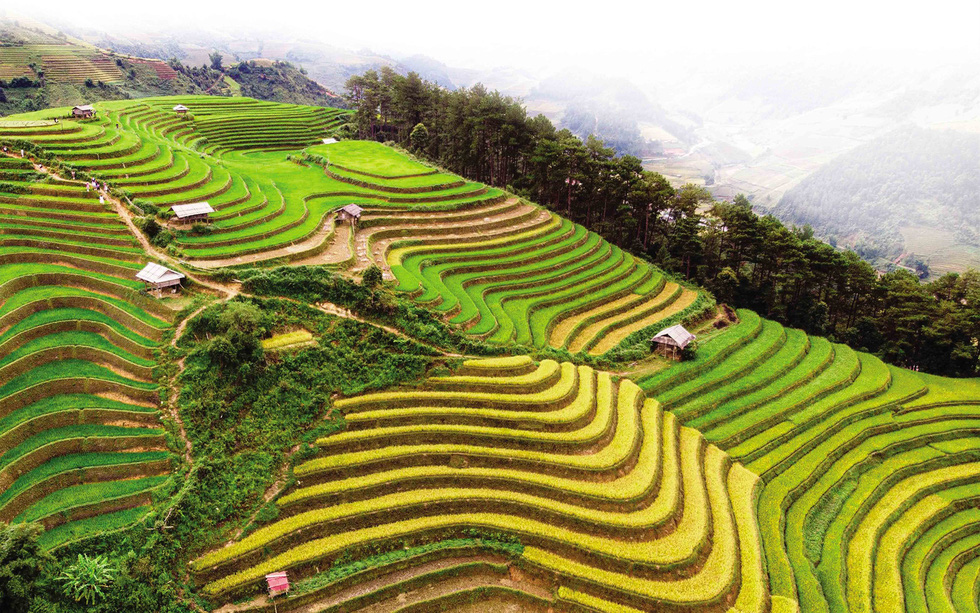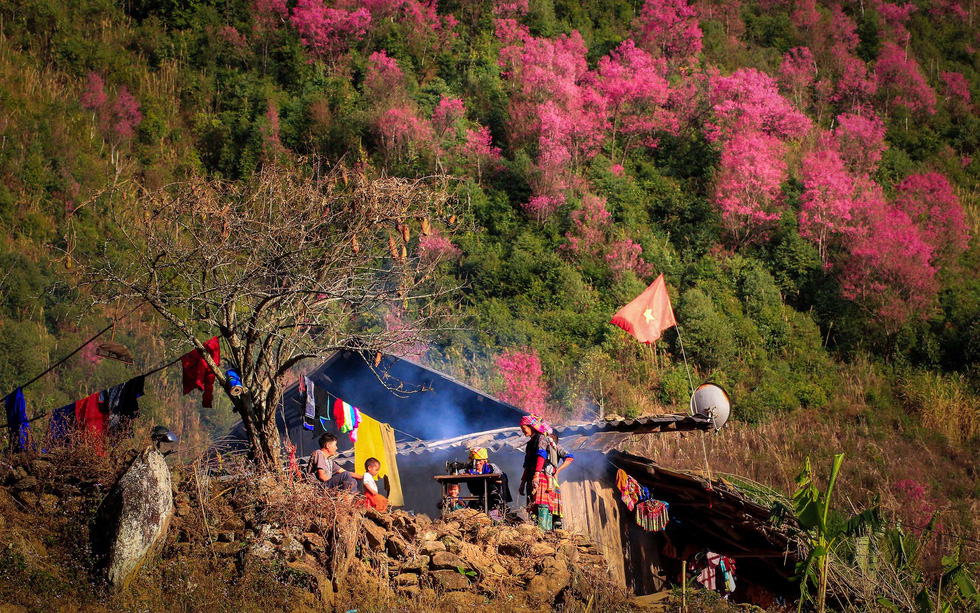Sitting on the edge of the modern world, the little country Bhutan made a name for itself as the world’s happiest country. Their way of achieving it, with all things considered, can be echoed in Vietnam, as seen from the ample potentialities of the upland province of Yen Bai.
This anticipation is not exactly pulled out of nowhere, for it is grounded on the Yen Bai administration’s decision to include Gross National Happiness, or GNH Index, as one of the touchstones for the 2020-25 term of the municipal Party Committee.
In contrast to the much more well-known Gross Domestic Product (GDP) tally, which promotes a focus on material gain, the GNH Index rewards approaches leaning toward holistic well-being, one that goes beyond economic development.
This was also the secret to the bizarre policy success of Bhutan, which started as a radical initiative by the fourth king Jigme Singye Wangchuck in 1972 and is still upheld to this day.
The question that remains, however, is whether Yen Bai can pick up the rope and improvise its own way toward another GNH success story.
Happiness in the terraced fields
Terraced fields in Yen Bai’s Mu Cang Chai District have enjoyed both authority recognition as a special national site and the ardor of tourists who flock to the area to catch sight of golden paddies during harvest seasons.
During these year-end holidays, income from the crowds of tourists may even exceed the value of the harvest itself.
Seeing the fledging potential in local tourism, several residents of Mu Cang Chai became first-movers of the sector, building unassuming homestay facilities filled with cultural heritage of the land.
One of them is the guest house of Giang A De, a Hmong native in La Pan Tan Commune.
His place proves a real challenge for visitors as it takes a long walk through up a steep slope from the car park to reach the house, but the magnificent view at the end is absolutely worth it – the scenario spreads to the horizon, presenting layers of blue mountain peaks and clouds under the syrupy gleam of the sun.
Giang A De said his income has been axed significantly due to the COVID-19 pandemic that thwarted foreign tourist visits.
However, during this low-demand period, he found time to erect two more bungalows to preempt the next year’s tourism season.
Over the past years, the construction boom has seen intricate wood structures of the local community torn apart to make space for concrete monoliths.
De collected the fine pieces of precious Fokienia wood and reassembled them into two peculiar bungalows of his design.
Sitting in a composition of long-lived wood in the midst of terraced rice paddies like this can make a typical cup of tea or a sip of local corn wine more poetic than any urban experience.
Sensing the demand for a getaway from city dwellers, homestays in the fashion of De’s are emerging as a business trend in Mu Cang Chai.
However, having relished the laid-back experience at De’s place, it becomes clear to any visitor that the formula cannot be replicated with mass tourism or soulless copycats. It lives in fresh air, the woods, and terraced fields rather than concrete or string lights.
On top of that, the lessons of budding indigenous tourism destinations defaced by greed and urbanization in other provinces still stand as cautionary tales for any community tourism aspirants.
It is not easy for the vanguards like De.
“We once gain mere nourishment from the rice paddies, but now it draws in tourists and nourish their eyes. The same paddies also provide us with extra income now. It’s worth hundreds of thousands of dong, the amount that [Kinh people] use to build grand sights,” he said.
Tourists also bring new experiences, including free language lessons and exotic foods for local communities, De pointed out.
“It’s called a win-win economy. For that reason, we have to preserve the paddies, the woods, and nature. Without them, there would be no tourists. No tourists mean no fun,” De said.
“Forest and rice fields are pivotal issues to us,” said Nong Viet Uyen, secretary of the Mu Cang Chai District Party Committee.
After his appointment two years ago, Uyen has always considered the preservation of forests and terraced fields his utmost priority.
|
|
| Hmong natives in Mu Cang Chai District of Yen Bai Province, Vietnam. Photo: Ngoc Quang / Tuoi Tre |
During his time in office, Uyen also learned about the art of keeping terraced fields from the indigenous community.
“Terraced fields are not only agricultural plots but also an important tool of the locals to prevent landslides," he said.
“It also helps that the terraced fields become a visitor favorite and a driving force for local tourism.”
For the Mu Cang Chai leader Le Trong Khang, the lush and extensive forest of the locale is another thing to be proud of.
“Forest coverage of Mu Cang Chai amounts to 67 percent. Many years ago, we used to see forest fire every time we headed here from the Khau Pha Pass, but the situation has been now put under control,” he recalled.
The flavors of the woodland
Endowed with the most distinct gift of nature, Yen Bai boasts a repertoire of specialties and artisans with fine aromatic qualities, such as pomeloss in Dai Minh, cinnamon in Van Yen, green tea in Suoi Giang, or roses in Nam Khat.
“Dai Minh Commune rakes in around VND50 billion [US$2.2 million] per year from pomelo fruits, a whopping amount for a mountainous locale. It means even more when the profit does not come from the destructive operations such as sand and mineral mining,” said Ta Quang Cong, the leader of Dai Minh Commune, who has a master’s degree in environmental studies.
As of recently, the endemic pomelo of the commune has earned the VietGAP certification for good agricultural practices, which has paved the way for the product to enter big supermarket chains such as Vinmart or Big C.
This also requires the environment of the locale to be kept pristine, as the smallest indication of pollution can lead to the revocation of the certificate.
During this season, the pomelo fruits are glowing gold, effusing a delightful citrus aroma in the garden of Nguyen Van Dinh, a farmer in Dai Minh’s Minh Tan Village.
As per Minh’s estimation, the pomelo garden earns him around VND400 million ($17,000) per year, while some other gardens even make more for their owners.
Yen Bai is also known for its exceptional green tea and cinnamon products, which require a flawlessly unstained environment to develop their finest qualities.
Visitors to Yen Bai can take the opportunity to stay overnight in the tea fields of Suoi Giang Commune, looking up to the Fokienia wood roofing of Hmong people at the foot of Mount Chong Pao Mua.
These wood rooking tiles bend themselves slightly under the sun to let light beams inside the house, but will shade the house tightly against rainwater during the downpours.
Surrounded by old tea trees that soar over the roof, sensing the faint but everlasting scent of woods mixing with a tea flower aroma, with a cup of fresh green tea in hand and the flickering flames of firewood as the companion, one would understand the concept of GNH without a word spoken: it is as simple as remembering to live in the present.
Like us on Facebook or follow us on Twitter to get the latest news about Vietnam!





















































